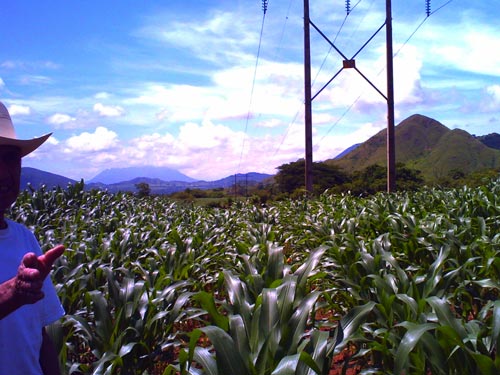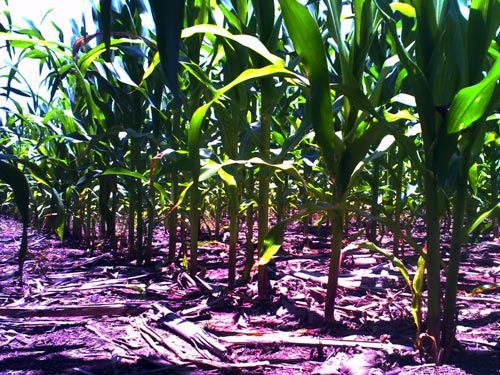
In Central Mexico, Conservation Agriculture, a more sustainable way of farming, has evolved from being a handful of researchers and a few innovative farmers working off of an idea to a full-fledged network, a system of support and dissemination since its beginnings in 2010. But there are no roots in the historically poor and, at times, politically volatile, Southern States; states that could greatly benefit from a farming system saving labor while ensuring higher productivity. To change this, CIMMYT decided to implement the Conservation Agriculture system in the state of Chiapas with hopes that if things go well, it can act as a gateway to the region.
My first experience with the technology dates back to June 2010, when Bram Govaerts, the head of CIMMYT’s Conservation Agriculture program in Mexico, picked me up outside of a bakery in Mexico City at five in the morning, so we could leave before traffic, some of the worst in the world, became too unruly. We arrived to the first field around seven and were met by a farmer’s eyes underneath a straw hat. At his side was a dog, which did not stray more than a few feet from the farmer, as he explained how rotating his crops had helped cut back on fertilizer use. Thoughtful crop rotation, an important part of Conservation Agriculture, can restore what the previous plant depletes, and thus helps cut down not only on fertilizer use, but also other chemicals, like herbicides, because weeds have more trouble surviving across the change from one crop to another.
Our next visit was to an idyllic field that seemed as if it had been untouched in the last 100 years, except for what looked like raised rows, known in Conservation Agriculture as “beds.” When you till too much, a lot of important nutrients are left loose and exposed to be washed away by rain or picked up by wind. Using special machinery to move the soil less and create these beds helps hold onto what makes soil, well, soil.

Fifty minutes later, we parked next to a crosshatch fence where a farmer waited with his family. A granddaughter held a rabbit that upon introduction hopped out of her hands and onto dried maize stalks, known as residues in Conservation Agriculture, covering the field. Leaving behind residues, which are really just part of what is grown, like stalks and stems, helps hold in moisture and protect old soil before decomposing into new soil. We traveled for thirty minutes more and met another farmer. One more hour and the next. And so on until we, dirt under our fingernails, arrived back in Mexico City just after midnight.
Two years later, what continues to resonate are the conversations with Bram. I see now that as we drove from unpaved road to stretched highway I heard his vision for what the young program would become in Mexico. A vision that today is a reality, spreading from Central Mexico to other Mexican states.
In August, I went to Chiapas to see these efforts. Late Friday night I arrived at the new office, where a storm had knocked out the power. The team and I made plans in the dark as we ate leftover sandwiches from a Conservation Agriculture training course earlier that day. The next morning we spoke with a farmer who adopted the technology after farming traditionally for over three decades, a result of having been inspired by the success of his son. We gave a silo to a farmer interested in a different storage option, and he told us how he had been waiting, how he had always believed in people like us as we explained Conservation Agriculture and MasAgro’s work over a cup of pozol made from maize he had sown.
Talking to the farmers taught me a lot about the importance of continuing to learn when faced with new practices. But what lingers more than the farmers are the people spreading this technology. The methods and benefits of Conservation Agriculture can make no difference without the people connecting to one another to explain them. To convince a farmer to go against tradition, against what most of his neighbors perceive as the right way to farm, and against how his parents grew the same crop. That is the real issue. And the team in Chiapas works to address this issue with a combination of skill and heart that is infectious.
 Climate adaptation and mitigation
Climate adaptation and mitigation 
